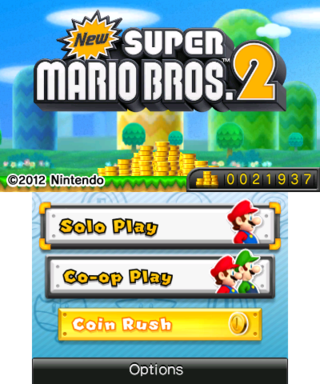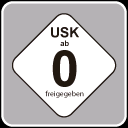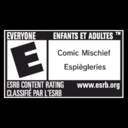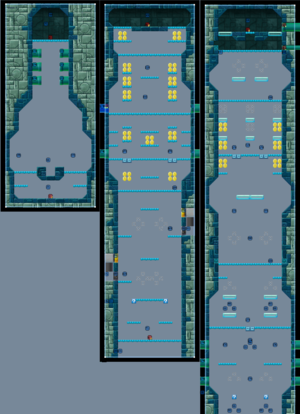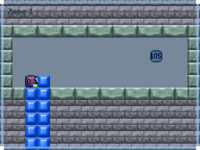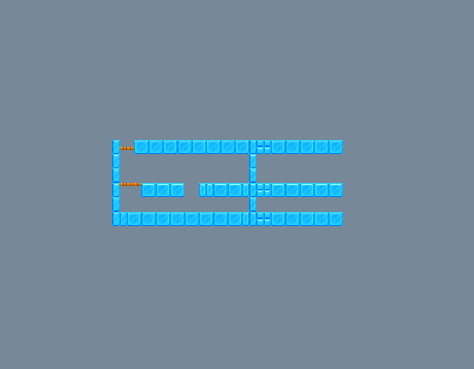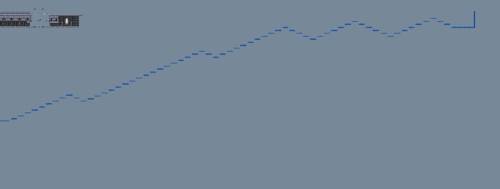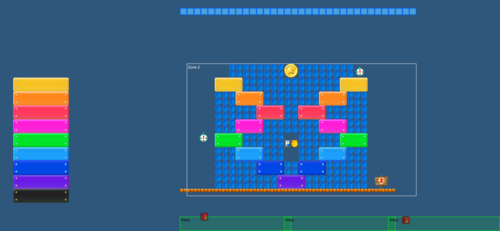New Super Mario Bros. 2
| New Super Mario Bros. 2 |
|---|
|
Developer: Nintendo EAD Group No. 4
|
New Super Mario Bros. 2, the inaccurately-named third installment in the New Super Mario Bros. series, is the most original and most creative game on the 3DS, made with completely brand new, never-before-seen assets. Besides saving the princess, a secondary goal of the game is to collect 1,000,000 coins, for which you get pretty much diddly squat.
According to an interview with the game's directors, the development staff for this one consisted mainly of people who had never worked on a 2D Mario platformer before. This is evident in some odd (but not necessarily bad) level design choices.
To do:
|
Contents
Sub-Pages
| English Translation Differences All of the English text differences between the European and North American versions. |
| Unused Features All of the unused settings and features that didn't make an appearance in the final. |
Unused Models
Gold Spiny
There are model archives for gold versions of the Spiny (togezo_G.bcres and paipo_G.bcres), despite the fact that when the Gold Ring is activated, Spinies turn into coins.
Early Gold Koopa
| To do: Add render of normal model with its early gold texture |
The normal (non-gold) Koopa Troopa model archive, nokonokoA.bcres, contains an early Gold Koopa model which comes with an early texture. There are also two more early textures contained within the archive, that would have gone with the normal Koopa model. The final gold Koopa Model (which is the same as the normal Koopa model) and texture is contained in a separate archive, nokonokoG.bcres, like the other gold enemy models.
| Early | Final |
|---|---|
 |
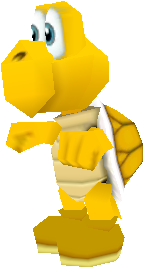 |
| Early, for normal model | Early, used in unused model | Final |
|---|---|---|

|

|

|
3D Donut Block
A 3D Donut Block. The final Donut Block uses 2D graphics, and has wide variations.
Unused Graphics
Placeholder Coins
These coin graphics can be found in every variation of "jyotyu" tileset (i.e. the tileset for general tiles like blocks and pipes). They act as a placeholder for the coin animation that is visible when coins jump out of blocks (ActorCoinDemoJump). The "倍" character means "double" and refers to the doubled rotation speed of the coin animation written to that tile slot.
Temporary Moon Coin Icon
ft_MoonCoinGet_00.bclim in MapSceneTop.arc is this image of what is probably a Star Coin, with the word "moon" on top of it.
Placeholder Mii
Various layout archives contain images of this placeholder Mii. There is also a small variation.
Fourth Built-In Course Pack
There is an icon for a fourth built-in course pack, alongside the used icons. It depicts the Super Leaf.
WX_dummy
In the directory RomFS\Model\CourseSelect there are several files called CS_WX.bcres (With X being replaced with numbers 1-9). Within files 1-5, there is an unused texture which (as the name suggests) is a dummy file for the corresponding world. It is just an 8x8 image of nothing but black, so there's not really much to see here. Strangely, in CS_W2.bcres, the dummy file is still called W1_dummy. This file is also present in other archives in the same directory, with the name still being W1_dummy.
NSMB Seesaw Lift
The Seesaw Lift model, obj_lift_seesaw.bcres, contains a copy of the Seesaw Lift texture from New Super Mario Bros.. It doesn't fit the current model.
Unused Font Characters
| To do: Compare them pixel for pixel and add comparison image |
![]() MarioFont32.bcfnt, the main font file for the game, contains some unused characters. These all are leftovers from Super Mario 3D Land except for the castle icon which looks to be unique.
MarioFont32.bcfnt, the main font file for the game, contains some unused characters. These all are leftovers from Super Mario 3D Land except for the castle icon which looks to be unique.
World Map Diamonds
Like in New Super Mario Bros. Wii, the World Maps have 3D diamonds that mark the path spots, but they aren't visible in-game.
New Super Mario Bros. Leftovers
Early World Map Path
Like in New Super Mario Bros. Wii, this texture from New Super Mario Bros. is used to mark the course spots on the world map models, but it's invisible in game.
Demo Ratings
The European demo version contains graphics for USK, CERO, PEGI, Portuguese PEGI and ESRB ratings, but only the standard PEGI rating graphic is used.
Blue Block Shards
| This page or section needs more images. There's a whole lotta words here, but not enough pictures. Please fix this. |
Blue Blocks have shard graphics which appear if they are destroyed, but destroying them isn't possible without hacking.
Early Object Numbers
As evident by some of the unused levels, early on the game used a completely different actor assignment table. For instance, the Goal Flagpole object number is 6 in the early table but 97 in the final one.
Unused Actors
ActorBlockRouletteSwitch
ActorBlockRouletteSwitch (ID 0xB8) is a block that cycles through two colors, red and blue. When hit, it activates flags based on the current color and stops changing color. For graphics, it uses two unused tiles from the main tileset. It seems pretty unfinished due to the lack of extra sounds (like the item roulette block and the switches have) and the fact that the tiles aren't displayed with the proper transparency for some reason.
FlagSwitchRandom
Previous games in the New Super Mario Bros. series featured a random flag controller (flags being the things activated by switches). New Super Mario Bros. 2 follows suit, having a FlagSwitchRandom actor (ID 0x19). Only difference being, the actor is not assigned to an object number, and thus unused. However, once restored, it is shown that it has 5 known settings. It has 4 triggering IDs, which the sprite then randomly chooses 1 and activates it. The other event is a target ID, which activates the actor.
DokanBonePakkunUp
The "Pipe Bone Piranha Plant - Up" actor is fully functional, but unused.
SearchKiller
This has an actor associated with it (ID 0xC4) and it makes enemies track the player characters. The actor is incomplete, as the animation for it turning around towards the player looks weird. Judging by the name, it was likely intended for the Bullet Bills (Killer is the Japanese name for the Bullet Bills).
Unused Replay Recorder/Player
The input manager class used to manage the game's gamepad input contains unused functionality to record and play back gameplay of a given level. Internally the input manager has 3 states - 0: Regular, 1: Record, 2: Playback. Without modifications to the games's code it will always be in the regular state.
In ScCourse::onCreate a global replay file path is checked if it is empty. If not, the input manager is put into the playback state and the given file path is used to load the replay data. That path however is never written to which means no replay data is ever loaded.
In ScCourse::onDelete the same path is checked if it is empty again. If not InputMgr::saveReplay is called. The given path to that function is just an empty string though so no data will be saved, even if the global replay path is set. The input manager's state is also never set to "Record" which is also required to save a proper replay.
There is also an unused code path to save replays to two locations on the 3ds' SD card if one is inserted:
sd://replay/[YY][MM][DD]_[hh][mm]_[ss]_[ii].rpr
- YY: Year (last 2 digits)
- MM: Month as 2 digits
- DD: Day as 2 digits
- hh: Hour as 2 digits
- mm: Minute as 2 digits
- ss: Second as 2 digits
- ii: Index as 2 digits, counting up from 0 if there already exists a file with the name
sd://replay/prd/[W]-[L].rpr
- W: Current World
- L: Current Level
A sample recording from "Gold Rush Pack-1" (10-1.sarc) can be found here: File:NSMB2 10-1.rpr.zip.
New Super Mario Bros. Wii also contains a replay system which was used for the gameplay for the title screen, the green ! block super plays and for the movies accessible from Peach's castle.
Early Tilesets
Similarly to the early object number table, old levels seem to have been designed with old versions of the J_Kihon/Yougan/Chika tilesets, which means those were reshuffled at some point of the development.
Unused Behaviors
- Trampolines become squished down if Mega Mario walks on them, and become unsquished once he walks off.
- The posts of Chain Chomps get knocked off-screen like pipes if Mega Mario walks into them. They get pushed all the way into the ground if Mega Mario stands on them.
Unused Levels
Placeholder Stage
This little stage occupies 45 level slots, and was presumably a placeholder for the slots that were later filled out with actual levels. It uses the early J_Kihon tileset and the early object table.
Ice Level
07-05.sarc contains an ice stage, parts of which seem to have been transferred to World 4-Tower. Uses the early J_Chika and the early object table.
Area 1 Zone 1
A rather unremarkable entrance area with a nice coin slide.
Area 1 Zone 2
Another rather unremarkable area, with some Goombas and a flagpole.
Area 2 Zone 1
| Early | Final |
|---|---|
Area 2 of this level was split into chunks, retiled with the Ice Tower tileset and incorporated into 4-Tower. The early level has Koopa Troopas instead of Buzzy Beetles, is generally shorter, and doesn't have any bonus areas.
Underwater Stage
08-04.sarc is an underwater stage which doesn't seem to resemble any other stage in the game. It seems that a small section may have been incorporated into World Mushroom-2, but otherwise is almost completely different. As usual, it has the old object set and the early blocks tileset.
Area 1
The entire area is nothing more but a small beach entrance room with a pipe and the placeholder level used as the flagpole room.
Area 2
This level's only real distinction is that it's the only early full stage that's not an early copy of something else. It's hard to guess what the level would be about, as there's no plausible comparisons.
Early 1-Castle
Present in 01-12.sarc. It uses both the early object numbers table and the early J_Yougan tileset. It should also be noted that the -12 slot is generally used for Ghost Houses.
Area 1
| Early | Final |
|---|---|
Notable differences in Area 1 include lack of the secret area with the Raccoon Leaf runway and above the final Giant Thwomp. Located outside of the zone in the early layout are also some impossible-to-see tiles and a pipe entrance, which have been removed in the final version.
Area 2
Area 2, not present in the final version of the level, appears to be directly lifted from New Super Mario Bros.' Castle 1 Area 2, bringing an interesting possibility of this level being built using that level as a base.
Area 3
| Early | Final |
|---|---|
 |
 |
An unpolished version of the final one. There's no BossShutter objects present, suggesting the bosses worked somewhat differently. The little room where you're supposed to see the next Koopaling run off with Princess Peach is also absent. It should be mentioned that the final Area 3 features some decorative tiles off-zone.
Early Flower-B
Present in 05-09.sarc, complete with the old J_Hikon and the early sprite set as usual.
Area 1 Zone 1
| Early | Final |
|---|---|
This level seemingly used a different mechanic in its first form, seeing how there are no mushroom stems in the early version. There are no bonus areas, as well. The Sweden-flag-like platforms were removed in favor of more presentable mushroom blocks.
Area 2 of the early version consists solely of a copy of the placeholder level.
Early Final Castle #1
Present in 06-10.sarc. The only portions present are the section that leads to the final battle with Bowser, and the room where said fight takes place.
Area 1
| Early | Final |
|---|---|
 |
 |
Area 1 is an early version of Area 3 in the final level. Clearly just temporary work, which was later refined.
Area 2
| Early | Final |
|---|---|
 |
Area 2 is what's supposed to be the final battle room. It's not clear what the early area was trying to achieve, but what is clear is that the final boss battle was meant to be quite different from how it ended up.
Early Final Castle #2
Present in 09-10.sarc is a second early iteration of the final castle, although this time all of the areas from the final one are present.
Area 1 Zone 1
| Early | Final |
|---|---|
 |
The early version of this area is much smaller and shorter compared to its finished version. An entire vertical section has been added, as well as a split path in the middle. Layer 2 backdrop was also included for decoration.
Area 1 Zone 2
| Early | Final |
|---|---|
 |
 |
This area had a secret Raccoon Leaf alcove added and a line-following flamethrower. Other than that and some minor adjustments to coins, blocks, and decoration, it stayed pretty much the same.
Area 2 Zone 1
| Early | Final |
|---|---|
This area was made much longer and more difficult. The early version seemingly does not have the stone-turning Koopalings gimmick in it.
Area 3 Zone 1
| Early | Final |
|---|---|
 |
 |
Once again, an unpolished temporary version of this room. This time, however, there's a little room intended for a cutscene. The hiding pits are longer compared to the other early version of this level, and objects have been moved around.
Area 4 Zone 1
| Early | Final |
|---|---|
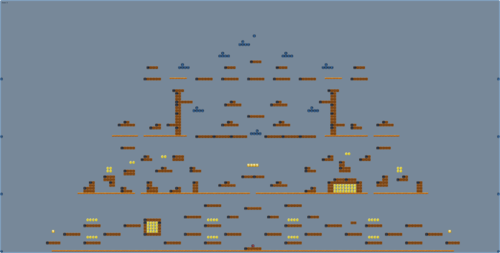 |
A second version of the weird boss fight room, this time without the blue metal blocks or the spikes. The layout of the lowest "level" was altered to be the longest instead of the shortest.
Early 9-5
Present in 07-04.sarc, with the early J_Kihon tileset and object table.
Area 1
| Early | Final |
|---|---|
The biggest change here is the mass of coins that was added. Other than that, the level seems to be pretty much the same with a few cosmetic changes here and there.
Area 2
| Early | Final |
|---|---|
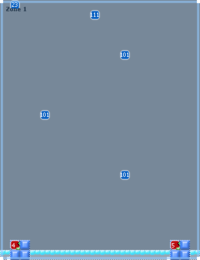 |
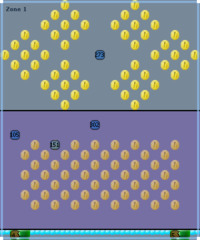 |
The early version seems to have nothing of interest except the Moon Coin. The final placed a ton of coins around.
"Hidden" Stage Elements
This game features more unused stage-related content than the previous iterations combined! The out-of-bound objects in World 2-3, World 5-2 and World Flower-3 aren't present in versions that were built after a certain point, namely; Korea, Japan Gold Edition, USA Gold Edition, Europe Special Edition and Taiwan/Hong Kong.
Unused 1-Castle Tiles
World 1-Castle has 4 sets of tiles above its boss zone.
Unused 2-3 Tiles
World 2-3 has a block arrangement below the zone which ended up being unused.
Flag Counting
Flower-Ghost House has invisible tiles to the left of the first zone. These numbers directly correspond to flags being activated as the player approaches that section of the level.
Unused Coin
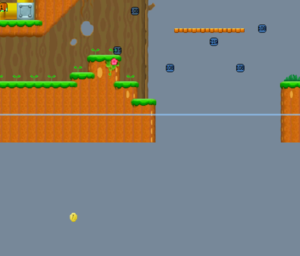 World 3-3 has a whole single unused coin underneath the zone.
World 3-3 has a whole single unused coin underneath the zone.
Unused Coin Formations
World Flower-3 has a few unused coin formations and mushroom stems underneath the first zone.
Unused Tiles
Mushroom-Ghost House has some unused staircases located under both of the zones.
Unused Tiles/Early Variation
Present in 07-08.sarc are unused tiles off the map and an early version of itself.
Area 1
Some sort of block structure is located underneath Zone 1.
Area 3
| Early | Final |
|---|---|
 |
 |
Pointlessly, Area 3 is an early version of Area 1, without Layer 2 tiles and with minor adjustments. It does not use the early sprite sets/tilesets, however.
Strange Structure
World Mushroom-Castle has a really weird pseudo-level-structure in its boss area. It's pretty much unlike anything else in the game and serves completely no purpose.
Pointless Red Blocks
World 6-2 has empty red switch blocks above both zones. They serve no purpose and cannot be seen.
Past the Flagpole
World 5-2 has some flag areas and coins beyond the flagpole, to the right of the zone. They cannot be seen or reached.
Pointless Rainbow Platforms
Coin Challenge Pack A Level 1 has rainbow platforms on the left of Zone 2. They cannot be normally seen or reached.
Unused Text
"Mario Select"
| Label | String (English files) |
|---|---|
| T_Message_00_PID00 | Which Mario do you want to play with? |
| T_UserName_00_PID00 | 0E 00 01 00 09 00 02 00 00 0A 00 00 |
| T_UserName_01_PID00 | 0E 00 01 00 09 00 02 00 00 0A 00 00 |
| T_UserName_02_PID00 | 0E 00 01 00 09 00 02 00 00 0A 00 00 |
\Message\[language]\MarioSelect\MarioSelect_00\MarioSelect_00.msbt contains strings for an early "Mario Select" screen. MarioSelect.bclyt appears to be the associated layout file.
Thank You For Playing!
| Label | String (English files) |
|---|---|
| T_ThankText_00 | Thank You For Playing! |
E3ThankYouForPlayingTop_00 in \Message\[language]\E3ThankYouForPlayingTop\E3ThankYouForPlayingTop_00.msbt contains this string. A similar string ("Thank you for playing!") can be seen in the pre-release demo(s) and in the post-release EU kiosk demo. This file is only fully present in the EU versions' Dutch text, and it is partially or fully removed in other version/language combinations.
Removed File
The Message Binary Project files (called BigRed.msbp) references a removed file "E3CourseInTop_00". This file likely contained the "Course #" text that could be seen at the beginning of levels in the pre-release demo(s).
Demo Leftover
The Korean version contains the text files from the Europe demo version, partially translated. They aren't used, and the related layout files are not present.
New Super Mario Bros. 2 Gold Edition
A special version of New Super Mario Bros. 2 was preinstalled for a limited time on select 3DS XL and 2DS systems, named Special Edition in Europe and Gold Edition in the rest of the world. It was not made available for sale separately on the Nintendo eShop or as a physical cartridge. As a result of including all of the released DLC, the "Shop" option in Coin Rush has been removed. It is possible to re-enable the "Shop" selection by using a save from the game's original release. While the "Shop" selection is visible by doing this, it has no functionality.
In the Taiwanese version, there are graphics for both Special Edition and Gold Edition, but only the Gold Edition graphics were used.
Internal Project Name
The project's internal name is "BigRed", according to the exheader title, bcsar filename and other data. This may also be reflected in the game's two-letter code "BE" (BigRed).
- Pages missing developer references
- Games developed by Nintendo EAD Group No. 4
- Pages missing publisher references
- Games published by Nintendo
- Nintendo 3DS games
- Pages missing date references
- Games released in 2012
- Games released in July
- Games released on July 28
- Games released in August
- Games released on August 19
- Games released on August 17
- Games released on August 18
- Games released in December
- Games released on December 26
- Games with unused areas
- Games with unused enemies
- Games with unused objects
- Games with unused graphics
- Games with unused models
- Games with unused text
- Games with regional differences
- Games with revisional differences
- To do
- Namespace subpages template used on pages with no such subpages
- Needs more images
- Mario series
Cleanup > Namespace subpages template used on pages with no such subpages
Cleanup > Needs more images
Cleanup > Pages missing date references
Cleanup > Pages missing developer references
Cleanup > Pages missing publisher references
Cleanup > To do
Games > Games by content > Games with regional differences
Games > Games by content > Games with revisional differences
Games > Games by content > Games with unused areas
Games > Games by content > Games with unused enemies
Games > Games by content > Games with unused graphics
Games > Games by content > Games with unused models
Games > Games by content > Games with unused objects
Games > Games by content > Games with unused text
Games > Games by developer > Games developed by Nintendo > Games developed by Nintendo EAD Group No. 4
Games > Games by platform > Nintendo 3DS games
Games > Games by publisher > Games published by Nintendo
Games > Games by release date > Games released in 2012
Games > Games by release date > Games released in August
Games > Games by release date > Games released in August > Games released on August 17
Games > Games by release date > Games released in August > Games released on August 18
Games > Games by release date > Games released in August > Games released on August 19
Games > Games by release date > Games released in December
Games > Games by release date > Games released in December > Games released on December 26
Games > Games by release date > Games released in July
Games > Games by release date > Games released in July > Games released on July 28
Games > Games by series > Mario series
